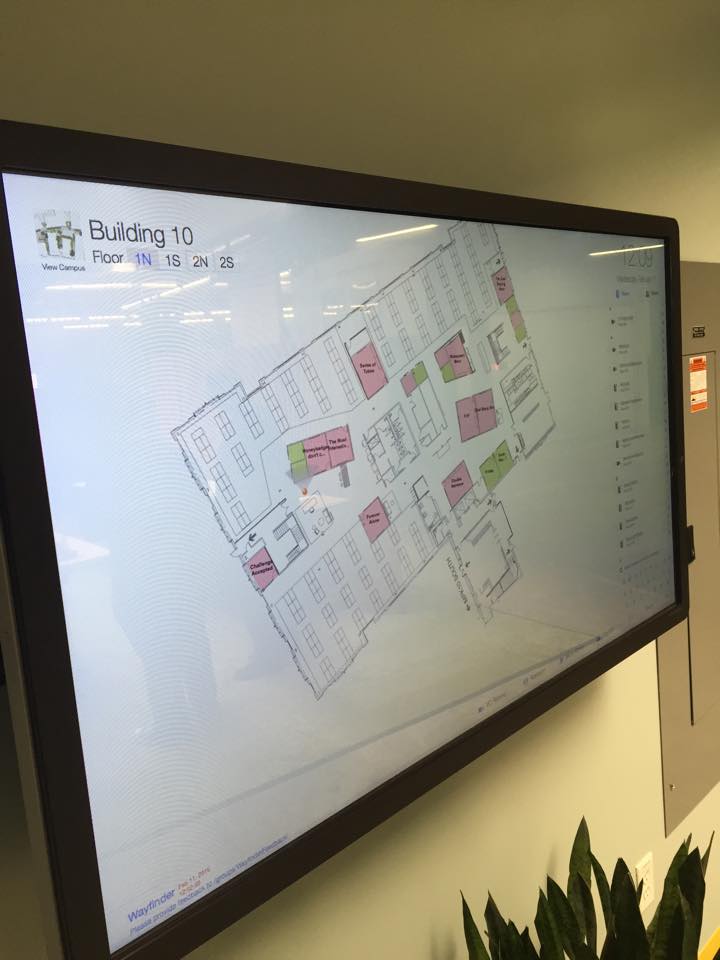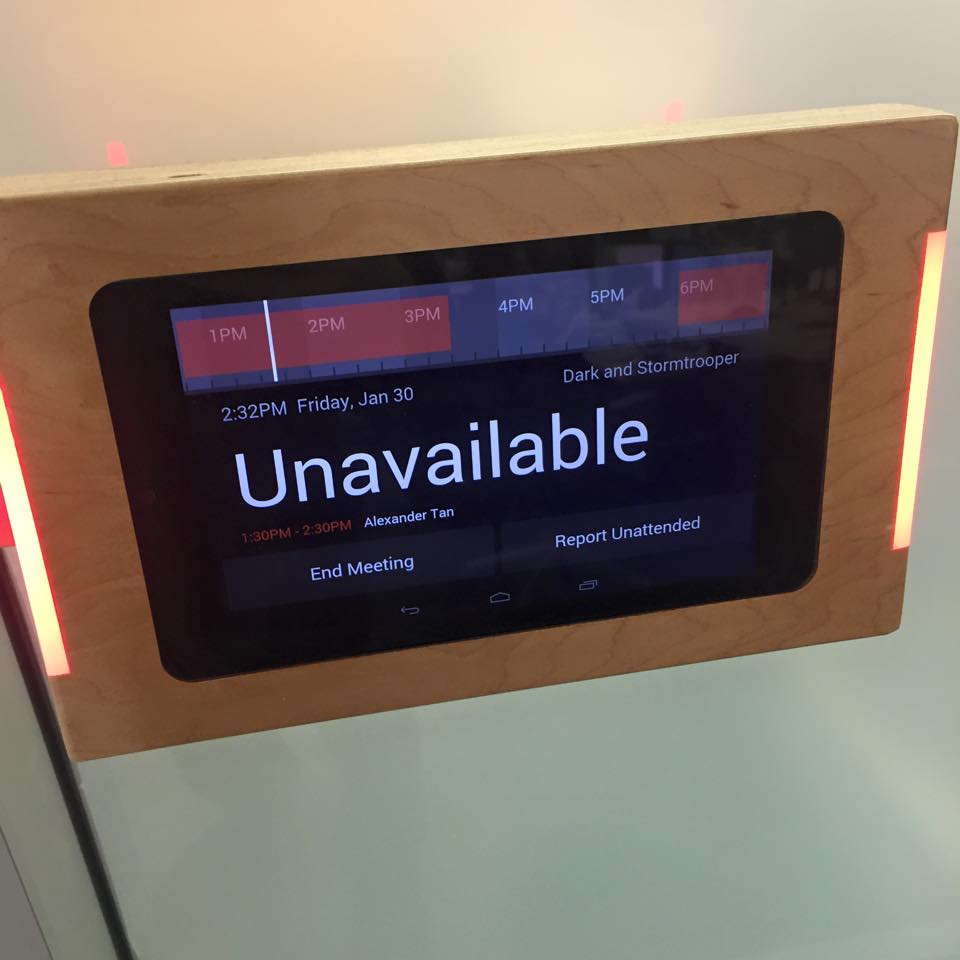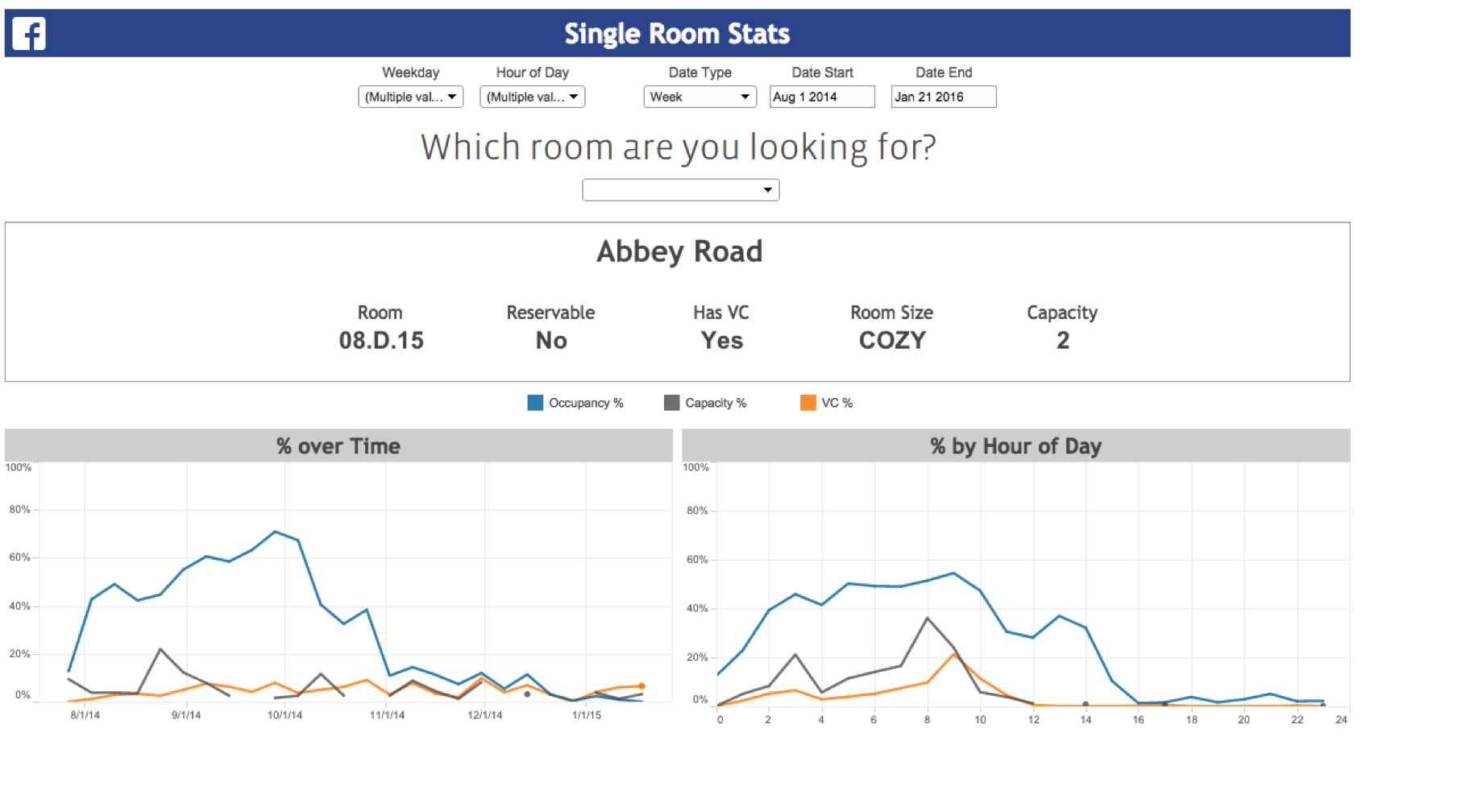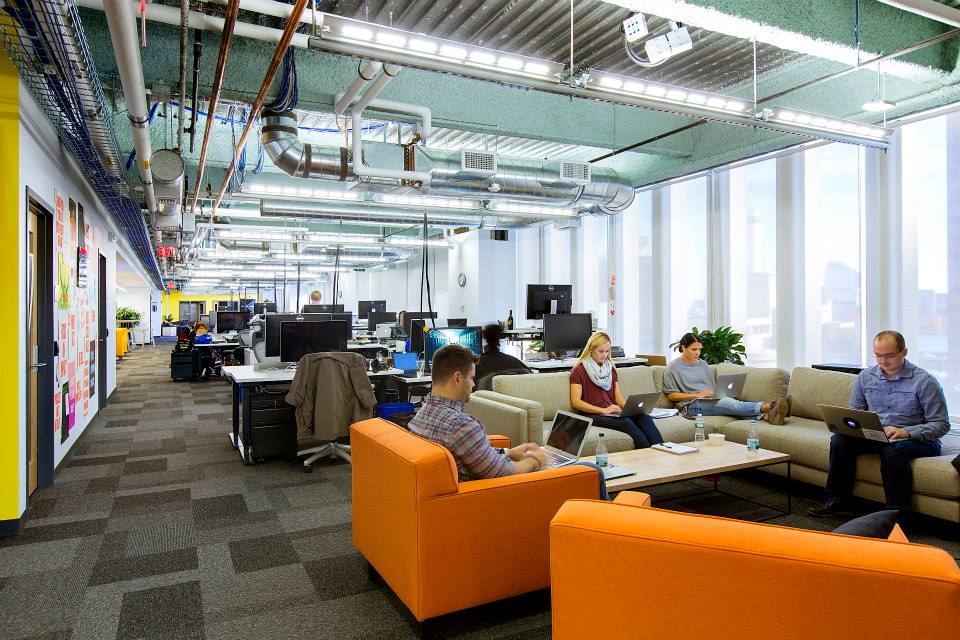In-person meetings at Facebook are an important element of our culture — they not only help us to connect with our colleagues, but they also help us build the best possible services for our community. Like many companies, we have lots of meetings. However, getting to a meeting is not always as easy as it should be. Facebook’s offices have an open floor plan, which helps foster collaboration and creativity — but it can sometimes also make it hard to figure out where a person sits, where a conference room is located, or even who has a room reserved at a given time. To solve for these problems, we’ve built a number of awesome tools to help people navigate our campuses and arrive at their meetings on time.
Homegrown tools

Located throughout our buildings are interactive digital maps we call Wayfinders. These touchscreen displays show the availability of conference rooms in real time and allow people to search for amenities, rooms, and other people. If you’ve ever been to a mall or an airport, you’ve probably seen similar digital mapping devices. These systems tend to have static content and are often programmed to look aesthetically pleasing. At Facebook, our employees are constantly moving around, and our can floor plans change on a weekly basis. What sets our Wayfinders apart from anything commercially available is that they are dynamically updated. For example, if someone’s desk location changes, the move will be reflected on the map in a matter of minutes. When a room’s calendar is booked, the maps highlight red to distinguish that those spaces are unavailable. Employees perform about 9,500 searches a day — once they find what they need, they’re off on their way!

We’ve also built and placed digital calendars called “Room Tools” outside each of our conference rooms. These allow people to book meetings on the fly, report issues to the facilities department, and view a room’s reservations for the day. Finding an available conference room in a Facebook building should take only seconds — LEDs show at a glance whether a room is available or booked. In some workplaces you’d either have to walk over to a conference room or sort through a bunch of calendars to find an available meeting space. On any given day, we see more than 800 meetings booked, 70 meetings reported as unattended, and 300 reservations released early. Room Tools consist of an Android tablet with a React UI that interfaces with a custom board that drives the LED colors. All in all, these devices quickly surface information that would otherwise be slow to access.
Making spaces more intelligent

As Facebook has grown, we’ve worked to optimize the tools and meeting spaces available for our employees to use. Like any company, one of the major challenges we’ve faced has been to make sure there are enough resources, such as conference rooms, for people to get their jobs done. To ensure that we’re maximizing the utilization of our conference rooms, we’ve integrated our Wayfinders and Room Tools with our building and videoconferencing infrastructure.
First, we installed motion sensors in every conference room so we can know when these rooms are occupied. We connected these sensors to each room’s calendar to determine when a room that’s been booked is not being used. When we detect that a room is unoccupied, we send an automated email to the meeting organizer to remind them of their room reservation. The organizer can choose to cancel the meeting remotely, making the room available for someone else to use. On average, we add back about 434 hours of meeting room inventory per week for others at the company to use.
Overall, we continually analyze how meeting space is utilized at our offices globally. When room calendars, motion sensors, and videoconferencing utilization are analyzed together instead of independently, a richer picture emerges of how our physical spaces are used. In performing this analysis, we’ve been able to create new spaces based on actual data on employee work habits, and curb our real estate portfolio growth. What’s really neat is that we can see how work habits differ on a 24-hour work cycle, and which offices and meeting spaces are utilized the most throughout any given day.
Summary
We’re always working to make Facebook employees more efficient by building unique and innovative tools. Building experiences that save people’s time not only enhances productivity, but it also allows us to collect and apply data in building new work spaces. Most of these integrated technologies are unique to Facebook, and we’re excited that many of our employees find them to be an integral and important part of our culture.










